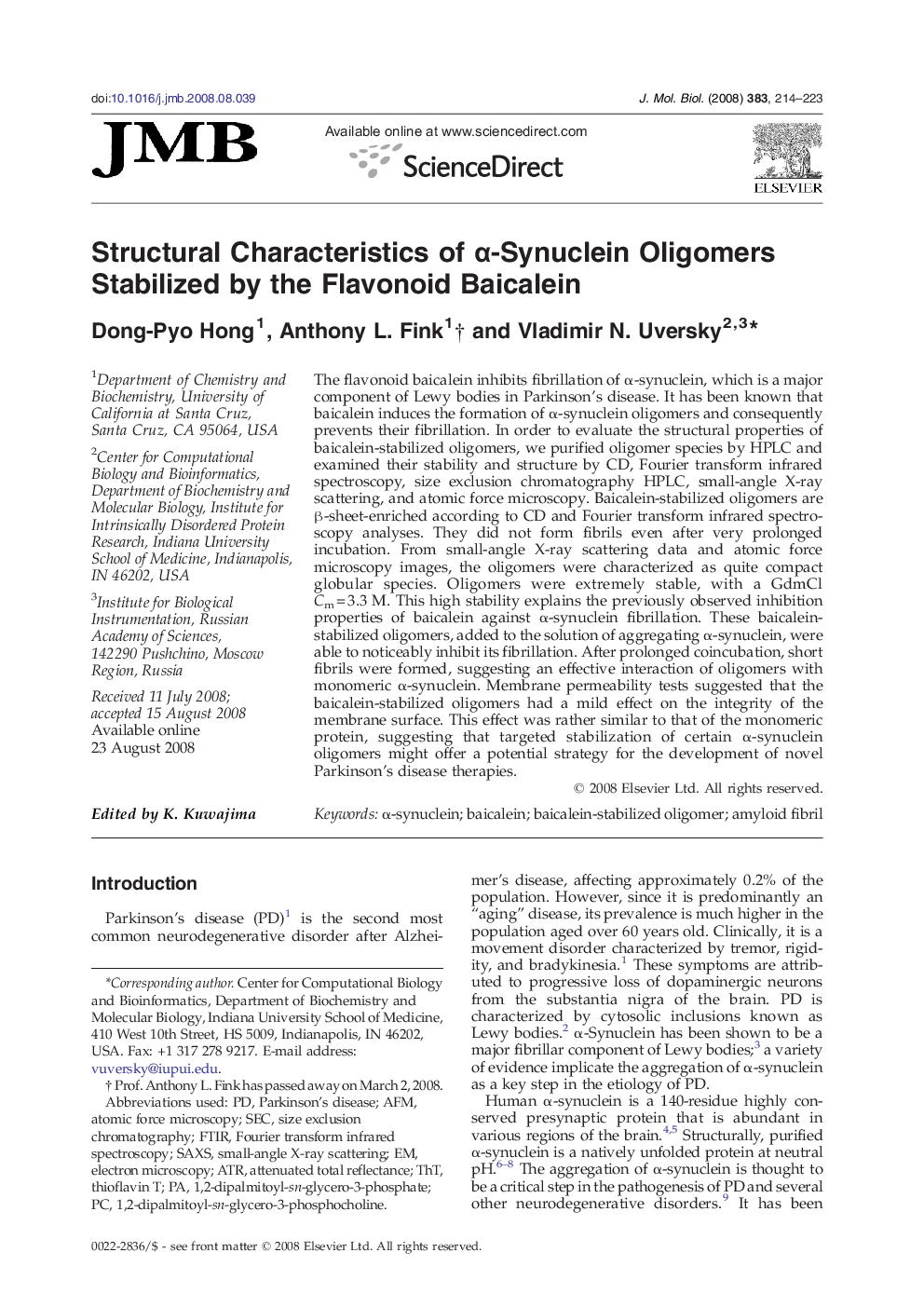| Article ID | Journal | Published Year | Pages | File Type |
|---|---|---|---|---|
| 2187269 | Journal of Molecular Biology | 2008 | 10 Pages |
The flavonoid baicalein inhibits fibrillation of α-synuclein, which is a major component of Lewy bodies in Parkinson's disease. It has been known that baicalein induces the formation of α-synuclein oligomers and consequently prevents their fibrillation. In order to evaluate the structural properties of baicalein-stabilized oligomers, we purified oligomer species by HPLC and examined their stability and structure by CD, Fourier transform infrared spectroscopy, size exclusion chromatography HPLC, small-angle X-ray scattering, and atomic force microscopy. Baicalein-stabilized oligomers are β-sheet-enriched according to CD and Fourier transform infrared spectroscopy analyses. They did not form fibrils even after very prolonged incubation. From small-angle X-ray scattering data and atomic force microscopy images, the oligomers were characterized as quite compact globular species. Oligomers were extremely stable, with a GdmCl Cm = 3.3 M. This high stability explains the previously observed inhibition properties of baicalein against α-synuclein fibrillation. These baicalein-stabilized oligomers, added to the solution of aggregating α-synuclein, were able to noticeably inhibit its fibrillation. After prolonged coincubation, short fibrils were formed, suggesting an effective interaction of oligomers with monomeric α-synuclein. Membrane permeability tests suggested that the baicalein-stabilized oligomers had a mild effect on the integrity of the membrane surface. This effect was rather similar to that of the monomeric protein, suggesting that targeted stabilization of certain α-synuclein oligomers might offer a potential strategy for the development of novel Parkinson's disease therapies.
